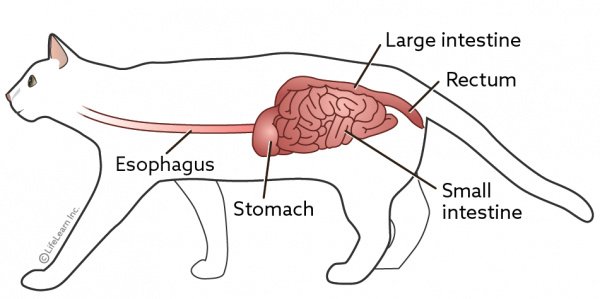When you move to a natural diet, either raw or gently cooked, you’ll notice some physical and behavioral changes in your dog or cat fairly quickly. They have more energy, drink less water, their coat becomes silky, breath and body smell better, shed less, they pee more and poop less.
This article focuses on the elimination portions of the early benefits: urine and stool.
You’ve recently switched to Fetching Foods. You’re happy that the food is being devoured. But you’ve noticed your furbaby is peeing more and pooping less.
Why? It’s because there’s simply more moisture in a natural unprocessed food than either canned or kibble (dry) food. A raw diet contains approximately 75% water (which is about the moisture make-up of dogs, cats, chickens, humans, etc). Canned food can range in moisture content from 40% into the low 70% range. Kibble is around 10% moisture.
This means your dog or cat will need to drink more if they’re going to stay hydrated. Poorly hydrated dogs and cats (and humans) can find themselves in a chronic state of mild dehydration. This places a strain on several organs, including the kidneys.
With more water in the food, especially for cats who get the majority of their hydration from what they eat (they have a low thirst drive so don’t drink much water anyway), they’ll pee more. You’ll see more volume in the urinations. This is a good thing, which eliminates more toxins from the body, diluting the pee so it has less smell, and keeping critical organs like the kidneys functioning at their best.
Eating high-quality, unprocessed foods also results in more complete digestion. Fetching Foods has a superior digestibility of approximately 93%. That means if 1lb of food was eaten, 93% would be absorbed by the body and only 7% would be waste. Compared to canned and kibble, those numbers are very different, which fall in the 40%-60% digestibility range. That means somewhere between 60% and 40% of the food ingested cannot be absorbed by the body and therefore must be evacuated as waste.
Said another way, if 10lbs of food was eaten, somewhere between 4lbs-6lbs cannot be used by the body, coming out as poop. If you think about it, that’s money on the ground, and your pet’s body is working harder than it’s designed to. On the other hand, with Fetching Foods, eating 10lbs of food would result in about 11oz of poop. Our cats go every 2-3 days. That’s perfectly normal on a raw diet.
What’s going on is waste accumulates in the rectum. This eventually causes dissension, or stretching/pressing on the retum walls, which triggers the bowel to move, creating an evacuation AKA a poop. It takes a little longer for 7% per meal to create enough accumulation to cause sufficient pressure to trigger a BM.
Commercial pet foods create more bulk more quickly, with their lower digestibility rates. When around half of what they eat is waste, that makes a bunch of poop really fast. That’s why there’s more frequent, large BMs on canned and kibble diets. The benefit of a raw diet is less poop to deal with (our dogs only go 1x day and it’s a fraction of the size of a kibble dog).
If you’re moving from a canned or kibble diet to a raw diet, it may be 3-4 days between BMs at first, because the rectum has to become accustomed (shrink) to this smaller amount of waste and the BMs should come down to 2-3 days or so.
The only thing better than less poop, is less smelly poop. Yep, that happens too. Using high quality ingredients vs what’s in most other foods, the smell is less. In most cases, way less. It seems the benefits of raw feeding high-end food never ends. Visit https://shop.fetchingfoods.com/ to find the right food for your cat or dog.

In recent years, pet owners have become increasingly concerned about the quality and nutritional value of the food they feed their furry companions. One trend that has been gaining popularity is the use of hydrolyzed ...
Introduction As pet owners, we are constantly seeking ways to improve the health and well-being of our beloved furry companions. One aspect that has gained significant attention in recent years is the use of herbal ...
As we move through this holiday season and towards the new year, we’ve been stuffing our faces as we prepare to stuff our stockings! You might already be at the point where you are loosening ...